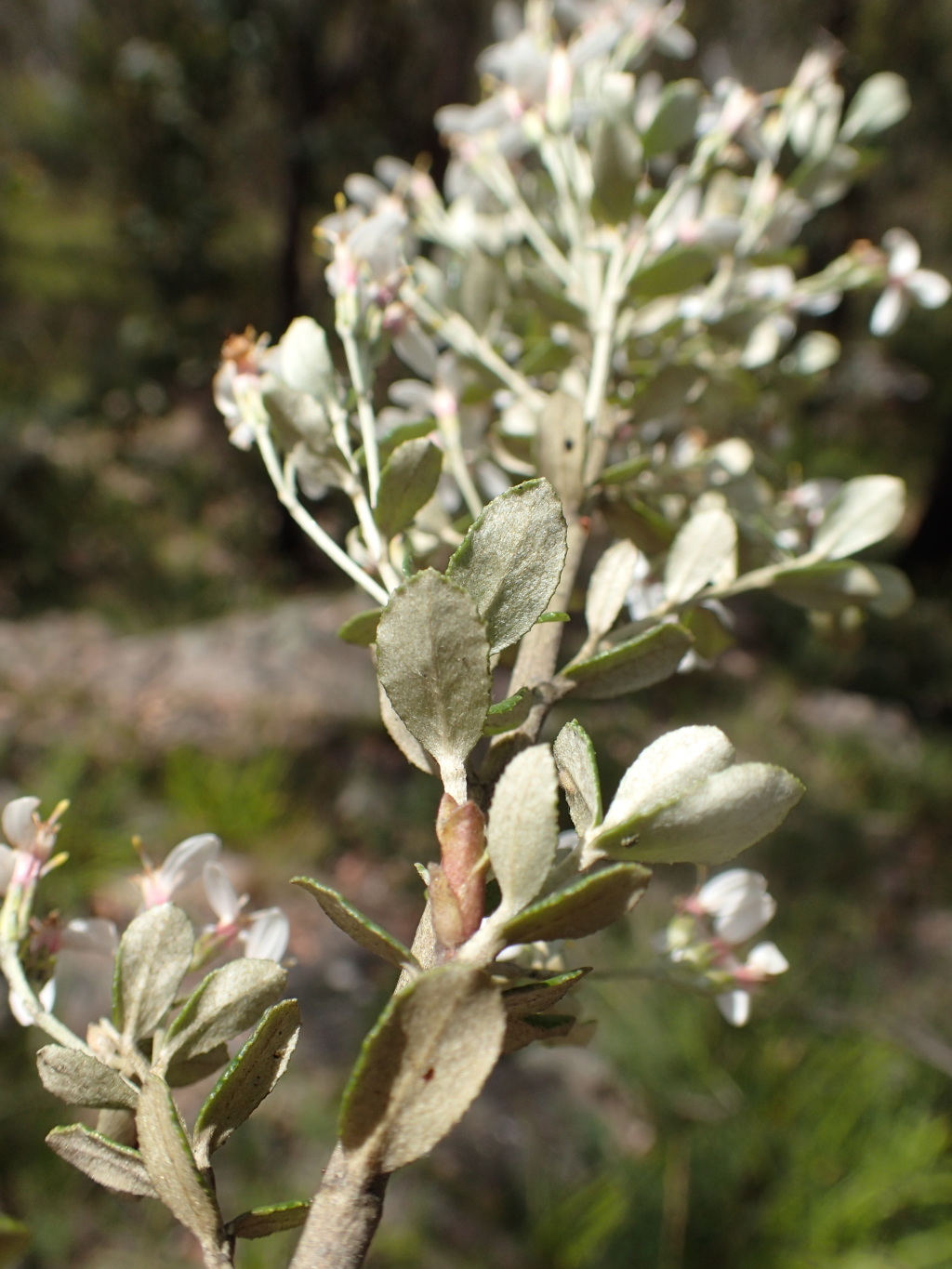Olearia myrsinoides
(Labill.) Benth. Silky Daisy-bushSpreading shrub to c. 80 cm high; branchlets and leaf undersurfaces closely covered by whitish T-shaped hairs. Leaves alternate, shortly petiolate, obovate (often broadly) to elliptic, 4–30 mm long, 3–22 mm wide, moderately stiff; upper surface glabrous, dark green, usually with pale reticulate venation, lower surface whitish; margin denticulate; apex obtuse or rounded. Capitula 13–20 mm diam. on peduncles usually under 1 cm long, terminal and axillary in slender leafy panicles; involucre conical, 4–6 mm long; bracts 2–3-seriate, graduating, sericeous at least near apex. Ray florets 2–4, white, ligules 6–8 mm long; disc florets 3 or 4, yellow or mauve. Cypsela narrowly cylindric, 8-ribbed, 3–4 mm long, glabrous; pappus bristles commonly pinkish, 5–8 mm long Flowers Nov.–Mar.
Wim, VVP, GipP, OtP, Gold, CVU, GGr, DunT, NIS, EGL, EGU, WPro, HSF, HNF, OtR, Strz, MonT, HFE, VAlp. Also NSW, ACT. Largely overlapping geographically and ecologically with O. erubescens, but probably commoner at lower altitudes and rarer in subalpine sites.
Closely related to O. erubescens but usually distinguished by the relatively broader, blunter leaves with more finely and evenly denticulate margins, and the fewer-rayed capitula with shorter peduncles. However, some specimens appear rather intermediate between the typical state of the 2 species.
Walsh, N.G.; Lander, N.S. (1999). Olearia. In: Walsh, N.G.; Entwisle, T.J., Flora of Victoria Vol. 4, Cornaceae to Asteraceae, pp. 886–912. Inkata Press, Melbourne.
 Spinning
Spinning
